QUESTION BANK CLASS 8 UNDERSTANDING QUADRILATERALS
- A simple closed curve made up of only line segments is called a polygon.
- Polygons that are convex have no portions of their diagonals in their exteriors or any line segment joining any two different points, in the interior of the polygon, lies wholly in the interior of it
- A regular polygon is both ‘equiangular’ and ‘equilateral’. For example, a square has sides of equal length and angles of equal measure. Hence it is a regular polygon.
- A rectangle is equiangular but not equilateral.
- the sum of the measures of the external angles of any polygon is 360°
- Trapezium is a quadrilateral with a pair of parallel sides
- Kite is a special type of a quadrilateral. The sides with the same markings in each figure are equal. For example AB = AD and BC = CD.
- A kite has 4 sides (It is a quadrilateral). (ii) There are exactly two distinct consecutive pairs of sides of equal length.
- A parallelogram is a quadrilateral. As the name suggests, it has something to do with parallel lines.
- A parallelogram is a quadrilateral whose opposite sides are parallel.
- There are four sides and four angles in a parallelogram.
- The opposite sides of a parallelogram are of equal length.
- The opposite angles of a parallelogram are of equal measure.
- The diagonals of a parallelogram, in general, are not of equal length.
- The diagonals of a parallelogram bisect each other.
- A rhombus is a quadrilateral with sides of equal length. Since the opposite sides of a rhombus have the same length, it is also a parallelogram. So, a rhombus has all the properties of a parallelogram and also that of a kite.
- The diagonals of a rhombus are perpendicular bisectors of one another.
- A rectangle is a parallelogram with equal angles.
- a rectangle is a parallelogram in which every angle is a right angle. Being a parallelogram, the rectangle has opposite sides of equal length and its diagonals bisect each other.
- The diagonals of a rectangle are of equal length.
- In a rectangle the diagonals, besides being equal in length bisect each other.
- A square is a rectangle with equal sides.
- In a square the diagonals.
- (i) bisect one another (square being a parallelogram)
- (ii) are of equal length (square being a rectangle) and
- (iii) are perpendicular to one another.
- The diagonals of a square are perpendicular bisectors of each other
POINTS TO REMEMBER
Parallelogram:
- A quadrilateral with each pair of opposite sides parallel.
- (1) Opposite sides are equal. (2) Opposite angles are equal. (3) Diagonals bisect one another.
- A parallelogram with sides of equal length.
- (1) All the properties of a parallelogram. (2) Diagonals are perpendicular to each other.
Rectangle:
A parallelogram
with a right angle
(1) All the properties of a parallelogram.
(2) Each of the angles is a right angle.
(3) Diagonals are equal.
Square: A rectangle
with sides of equal
length.
All the properties of a parallelogram,
rhombus and a rectangle.
Kite: A quadrilateral
with exactly two pairs
of equal consecutive
sides
(1) The diagonals are perpendicular
to one another
(2) One of the diagonals bisects the other.
(3) In the figure m∠B = m∠D but
m∠A ≠ m∠C.
EXERCISE 3.1 - 1. Given here are some figures
- 2. What is a regular polygon? State the name of a regular polygon of (i) 3 sides (ii) 4 sides (iii) 6 sides
- 1. Find x in the following figures.
- 2. Find the measure of each exterior angle of a regular polygon of (i) 9 sides (ii) 15 sides
- 3. How many sides does a regular polygon have if the measure of an exterior angle is 24°?
- 4. How many sides does a regular polygon have if each of its interior angles is 165°?
- 5. (a) Is it possible to have a regular polygon with measure of each exterior angle as 22°?
- (b) Can it be an interior angle of a regular polygon? Why?
- 6. (a) What is the minimum interior angle possible for a regular polygon? Why?
- (b) What is the maximum exterior angle possible for a regular polygon?
EXERCISE 3.3
1. Given a parallelogram ABCD. Complete each
statement along with the definition or property used.
(i) AD = ...... (ii) ∠ DCB = ......
(iii) OC = ...... (iv) m ∠DAB + m ∠CDA = ......
2. Consider the following parallelograms. Find the values of the unknowns x, y, z.
3. Can a quadrilateral ABCD be a parallelogram if
(i) ∠D + ∠B = 180°? (ii) AB = DC = 8 cm, AD = 4 cm and BC = 4.4 cm?
(iii) ∠A = 70° and ∠C = 65°?
4. Draw a rough figure of a quadrilateral that is not a parallelogram but has exactly two opposite angles
of equal measure.
5. The measures of two adjacent angles of a parallelogram are in the ratio 3 : 2. Find the measure of each
of the angles of the parallelogram.
6. Two adjacent angles of a parallelogram have equal measure. Find the
measure of each of the angles of the parallelogram.
7. The adjacent figure HOPE is a parallelogram. Find the angle measures
x, y and z. State the properties you use to find them.
8. The following figures GUNS and RUNS are parallelograms.
Find x and y. (Lengths are in cm)
10. Explain how this figure is a trapezium. Which of its two sides are parallel? (Fig)
11. Find m∠C in Fig, if .
12. Find the measure of ∠P and ∠S if in Fig.
(If you find m∠R, is there more than one method to find m∠P?)
1. State whether True or False.
(a) All rectangles are squares
(a) All rectangles are squares
(e) All kites are rhombuses.
(b) All rhombuses are parallelograms
(f) All rhombuses are kites.
(c) All squares are rhombuses and also rectangles
(g) All parallelograms are trapeziums.
(d) All squares are not parallelograms.
(h) All squares are trapeziums.
2. Identify all the quadrilaterals that have.
(a) four sides of equal length
(b) four right angles
3. Explain how a square is.
(i) a quadrilateral
(ii) a parallelogram
(iii) a rhombus
(iv) a rectangle
4. Name the quadrilaterals whose diagonals.
(i) bisect each other
(ii) are perpendicular bisectors of each other
(iii) are equal
5. Explain why a rectangle is a convex quadrilateral.
6. ABC is a right-angled triangle and O is the mid point of the side
opposite to the right angle. Explain why O is equidistant from A,
B and C. (The dotted lines are drawn additionally to help you).
EXAMPLE
- Find the number of sides of a regular polygon whose each exterior angle has a measure of 45°.
- RENT is a rectangle (Fig 3.35). Its diagonals meet at O. Find x, if OR = 2x + 4 and OT = 3x + 1.
- RICE is a rhombus (Fig 3.30). Find x, y, z. Justify your findings.
- In Fig, HELP is a parallelogram. (Lengths are in cms). Given that OE = 4 and HL is 5 more than PE? Find OH.
- In a parallelogram RING, (Fig 3.22) if m∠R = 70°, find all the other angles
- In Fig, BEST is a parallelogram. Find the values x, y and z.

- Find the perimeter of the parallelogram PQRS
- Find measure x in Fig.


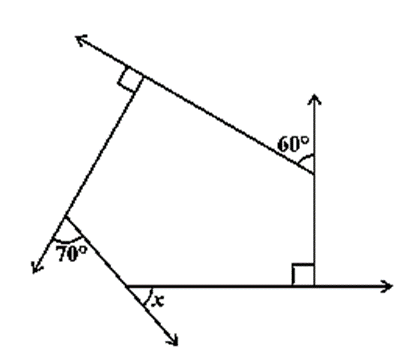




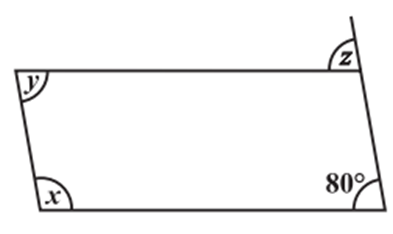
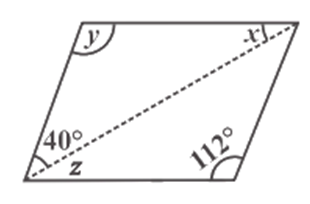



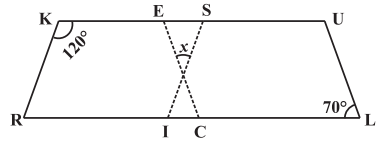



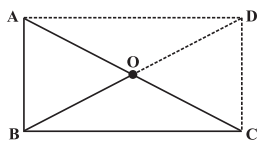


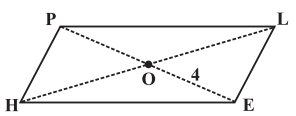



No comments:
Post a Comment